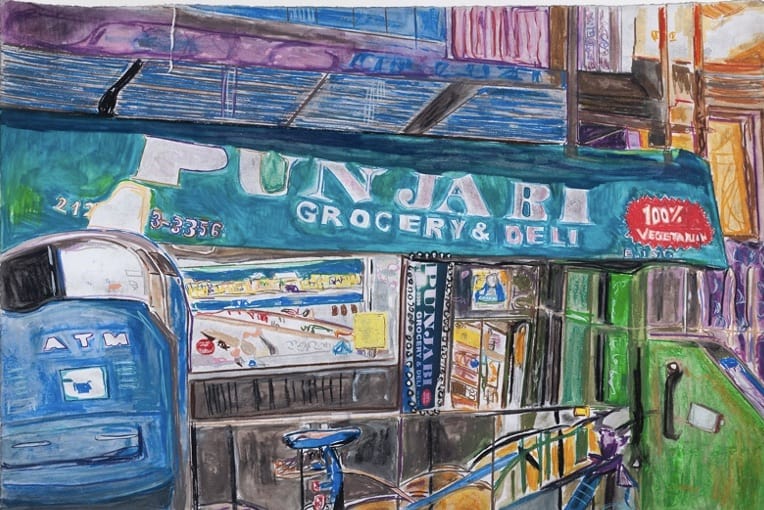Meet the talented artist that is coming to PAMA this weekend
Published February 26, 2020 at 7:24 pm

Peel Art Gallery, Museum + Archives (PAMA) welcomed a new touring exhibition, Jagdeep Raina: Chase, in early February (on until May 24).
Peel Art Gallery, Museum + Archives (PAMA) welcomed a new touring exhibition, Jagdeep Raina: Chase, in early February (on until May 24).
Raina’s moving and expressive textiles and drawings explore memory and a sense of community. The show is curated by Shauna McCabe and organized by the Art Gallery of Guelph with the support of the Ontario Arts Council and the Canada Council for the Arts.
On Saturday, February 29, 2020, from 1 – 4:30 p.m., guests will have the opportunity to join the artist for a meet and greet in the exhibit and enjoy a film screening and discussion with Raina’s special guests Pamila Matharu and Sarindar Dhaliwal.
Raised and currently based in Guelph, Raina shares stories of the Sikh diaspora and draws upon personal records and those of his family who were among the first to immigrate to southern Ontario and oral and archival histories of the wider pioneering Kashmiri and Punjabi Sikh diaspora.
Below is a Q&A with Raina.
Q| What made you want to become an artist?
A| I was drawn to the visual language as a way to tell stories and a love of materials.
Q| Who has most inspired you in your life?
A| Friends, family, artists, activists, writers, too many to name.
Q| What inspires you to create art?
A| A need to keep telling a diverse range of stories and collaborating with other artists.
Q|Who are your favourite works or artists?
A| I don’t have a favourite “work” but lots of favourite artists. Some current favourite artists are: Felix Gonzalez Torres, Adrian Piper, David Hammons, Rick Lowe, Mamma Andersson, Kara Walker, Faith Ringgold, Fred Wilson, Emily Jacir, Latoya Ruby Frazier, Hannah Ryggen, Kerry James Marshall, the list goes on and on…
Q|What do you hope visitors will walk away with after seeing your art?
A| It’s hard for me to say, hopefully, they feel inspired to think about the importance of their own voices to become storytellers in whatever medium they choose to engage with.
Q|Why are you drawn to create textiles?
A| The reason why I am so passionate about textiles is because I’m inspired by the history of textiles in the global south: particularly Punjab and Kashmir in India. I hope to learn how to construct two forms of textiles that hail from my ancestral history being a Kashmiri-Punjabi Artist: The Punjabi Phulkari and the Kashmiri Shawl.
The Phulkari, woven out of hand-spun cotton and then naturally dyed is an embroidered textile created in the villages of Punjab. Following the fall of the Empire, the relinquishing of control over India by the British and the violent upheaval of the Partition, the state of Punjab was dramatically altered, leading to the disappearance and heavy destruction of many Phulkari pieces. Globalization, the breakdown of Punjabi villages and workplace exploitation of Punjabi women has led to difficulties in the Phulkari’s renewal as a collective and collaborative form of art. I also want to eventually take the skills I have learned with naturally dyeing and learn how to construct the Kashmiri Shawl.
Woven out of pashmina wool and then naturally dyed, many designs found on these shawls are stylized plant and floral motifs, particularly the Bambi (mango) tree or tree-of-life motif, later known as the paisley design. While this tradition has deteriorated due to industrialization, imperialism, militarization, and exploitation of the Kashmiri weaver, in recent years there has been a revival both in Kashmir and the diaspora. Learning embroidery has been inspiring to connect me to my heritage, and I hope to keep building skills in weaving natural dye sewing and spinning as well.
Story and photos courtesy of Peel Art Gallery Museum and Archives
Photo credit: Jagdeep Raina, Friday Nights (2016), Mixed Media on Paper 20 x 44 in
insauga's Editorial Standards and Policies advertising





